by bria4123 on November 15, 2012
The Khmers knew how to do things dramatically.
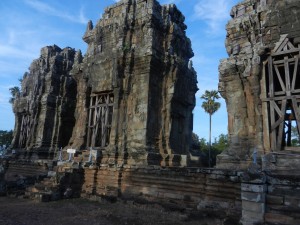
The temple on Phnom Krom was built by an early Khmer king, Yasovarman I, or his court officials around 900 CE. He founded the city of Angkor and established ideas that the Khmers unified themselves with for the next 500 years. Exploring it will take you into some of Angkor Wat’s cultural foundations. [click to continue…]
by bria4123 on November 14, 2012
The same flow has graced Luang Prabang’s streets for centuries.
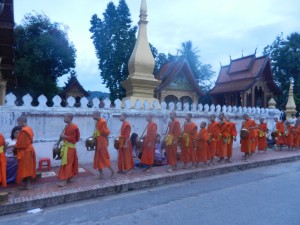
In the 14th century, King Fa Ngum founded the Lan Xang kingdom in Luang Prabang. In the 16th, King Photthisarat coordinated Buddhist rituals with the royal court and founded several monasteries. Since then, processions of monks and the stately royal palace have been associated. But deeper currents also enrich these processions. [click to continue…]
by bria4123 on November 13, 2012
Hey, where’s the beef?
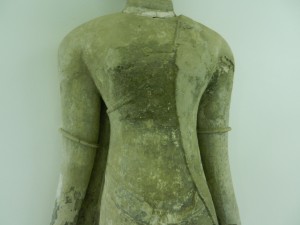
This torso of a standing Buddha statue from the 14th century in the northern Thai town of Chiang Saen is a world away from the realistic ancient Greek statue in the last post. But Thai art is from a different world, which becomes more enchanting as you explore it. [click to continue…]
by bria4123 on November 12, 2012
The ancient Olympian games had a lot of influence on ideas that Westerners have considered to be the bases of nature and thought.
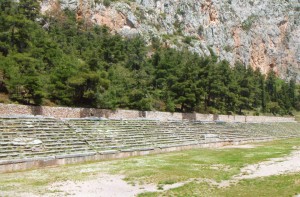
How did beefcake become brain? Sprint through the starting gate and find out. [click to continue…]
by bria4123 on November 11, 2012
It don’t look like much. Only the roosters seem impressed.
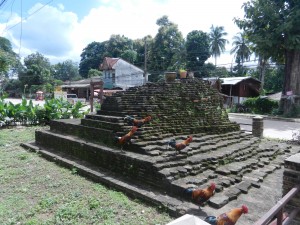
But a walk through its neighborhood in the old town of Chiang Saen revealed one enchantment after another–and a different world than the one that Westerners are used to. [click to continue…]
by bria4123 on November 11, 2012
The historic northern Thai town of Chiang Saen is full of ancient Buddhist monuments, but Wat Phra That Chedi Luang is its principle shrine. People from all walks of life still pay their respects there.
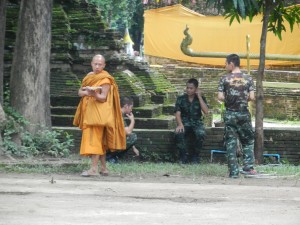
About 200 soldiers on a break shared the grounds with monks. Their garb differed, but all were disciplined young men quietly ambling around the temple. The temples in Chiang Saen represent a different way of encouraging people to cohere than the Athenian Agora in the last post–and a real cool intercultural comparison. [click to continue…]
by bria4123 on November 11, 2012
In the last post I said that Greece was one of the friendliest countries I’ve been in. I’ve visited a lot of friendly countries, but Greek friendliness was different.
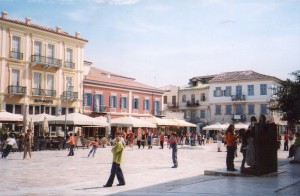
Folks in many places don’t like to discuss politics too much. It’s a hot topic that can make people blow their tops. But people I met in Greece loved it. They enjoyed talking about everything under the sun. This post will show how this is connected with some of the West’s most basic assumptions about the world–it’s deepest thoughts have human sides that many people don’t realize. [click to continue…]
by bria4123 on November 10, 2012
Athens’ Parthenon is perfect. Its static lines, balanced proportions and sharp distinctness from the rock it presides on have made it a model of reality in the West. Modern scientists and engineers still admire its design–it confirms their convictions that rationality is the foundation of nature and the human mind.
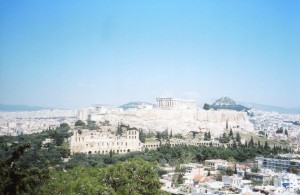
But when I stayed in a hostel in its shadow, I encountered human sides of this idea. [click to continue…]
by bria4123 on November 9, 2012
No controversy here. I’ve never heard anyone call Chiang Saen’s Wat Pa Sak ugly.
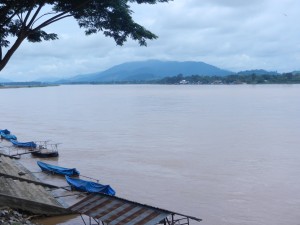
The old town of Chiang Saen sits at a historic place on the Mekong–many ancestors of the Thai people crossed into this area when they migrated from the north. This neck of the woods had a lot of influence on the Thai culture that spread through the land. So it’s no accident that one of northern Thailand’s most beautiful stupas was built in Chiang Saen. Architects in many other monasteries imitated it, so it’s well worth a close look. [click to continue…]
by bria4123 on November 9, 2012
Michael Freeman said that vihara (public assembly hall) in Wat Ming Muang in Nan, Thailand is in stunningly bad taste.
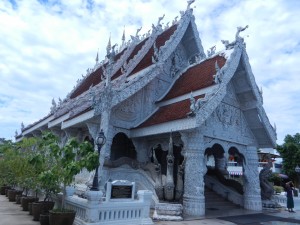
OK, I wouldn’t want a model of it in my yard. But look closely enough to enter Thai ways of thinking, and your definitions of beauty and ugliness might change for the better. [click to continue…]










